Your Country Needs Socks - Queensland Soldiers' Sock Fund
By JOL Admin | 27 July 2016
On April 19, 1915 a meeting was held at Government House in Brisbane by Lady Goold-Adams, wife of the Governor of Queensland, with a view to establishing the Queensland Soldiers' Sock Fund.
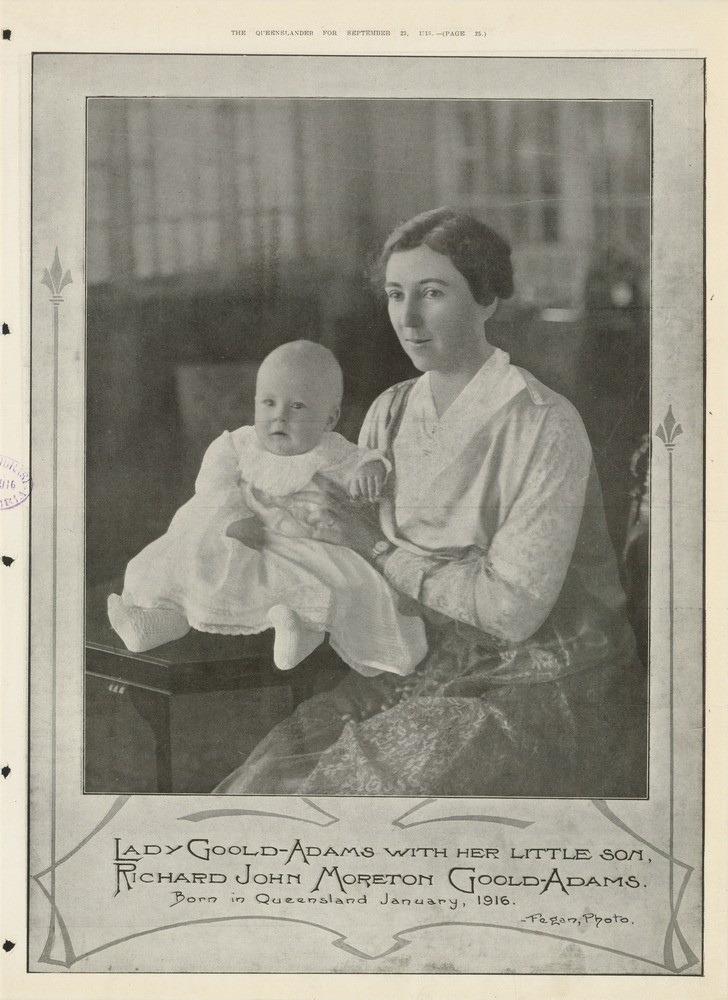
Lady Goold-Adams with her son, Richard. From Queenslander Pictorial supplement, 23 September 1916. John Oxley Library, State Library of Queensland. Image 702692-19160923-0025
The purpose of the fund was to acquire charitable subscriptions to purchase wool, which would then be knitted into socks for soldiers at the front by enthusiastic volunteers. The committee featured several prominent Brisbane women including Lady Goold-Adams as president of the fund, Lady Marie Cowley, wife of former politician Sir Alfred Sandlings Cowley; Zina Cumbrae-Stewart, a prominent philanthropic volunteer and wife of barrister and librarian Frank Cumbrae-Stewart, and Caroline Macartney, wife of politician and solicitor Edward Henry Macartney.
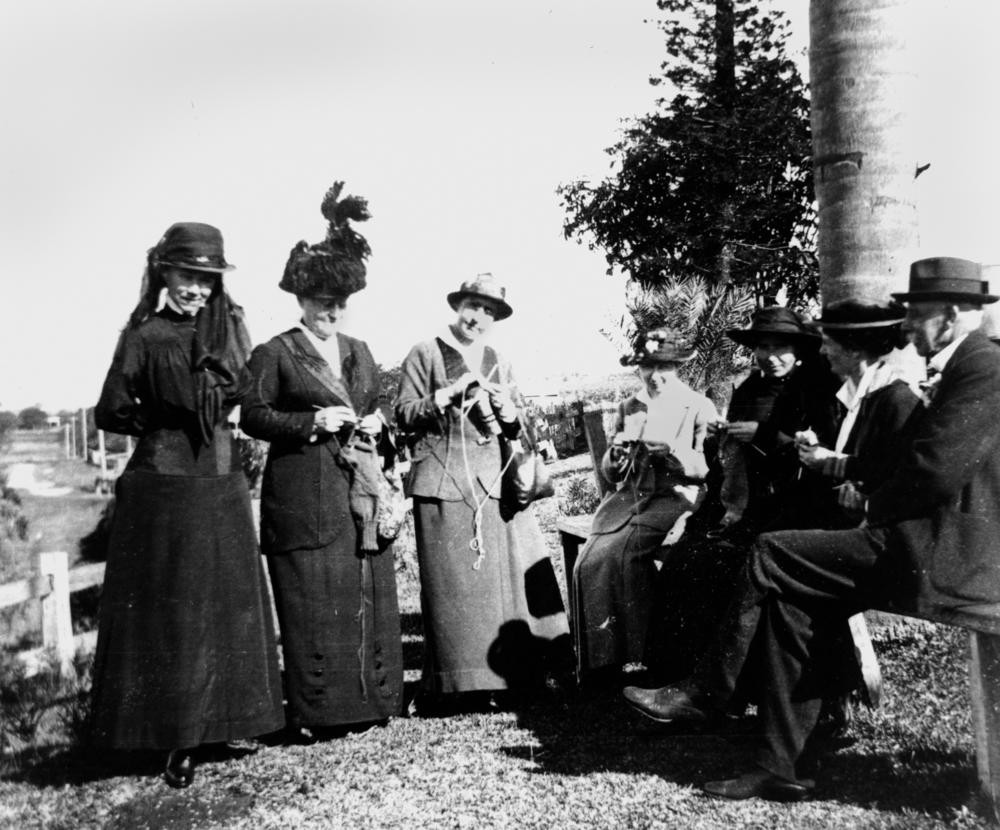
Knitting socks for soldiers, Redland Bay, July 1916. Pictured from left to right are: (possibly) Mrs Robert Henderson (nee Blance Philp), Mrs. James Forsyth, Mrs. Vic Campbell, Ivy Philp, unidentified, unidentified, Mr. James Forsyth. John Oxley Library, State Library of Queensland. Neg 151685
At the first meeting it was confirmed that the headquarters of the Queensland Soldiers' Sock Fund would operate from the Queensland Missionary Depot in Albert Street, where donations could be received and wool distributed.
In the days following the first meeting an open letter by Lady Goold-Adams appealing for public support was published in newspapers throughout Queensland.
"Sir, - I trust that you will allow me to make an appeal to residents of Queensland on behalf of a society which it is proposed to call "The Soldiers' Sock Fund"... In letters received from several officers at the front, by ladies here and in Sydney, mention has been made of how much the soldiers in the trenches need socks, and owing to the great wear and tear the supply does not meet demand....Gifts of knitted socks should be of the following measurements and description: - Length of leg, 14 in.; length of foot, 10 1⁄2 in., 11 in., and 11 1⁄2 in.; spliced heels and toes, and made with four ply wool of grey or natural colour...."
Every fortnight knitted socks were packed into cases at the depot and sent to the Queensland Patriotic Fund who stored them until they were ready for shipping to the front.
With the help of knitting volunteers, a number of branches of the Queensland Soldiers' Sock Fund were established throughout Queensland including the Wynnum Patriotic Sewing League, Roma Knitting Circle, Roma Sock Fund, Gympie, Townsville, Bundaberg, Mackay, Charleville, Capella, Isis and district, Mitchell and district, Gayndah, Toowoomba, Atherton, Miss Mayne's Knitting Circle, Mesdames Donaldson and Patterson's Knitting Circle (Toowong). Several private and public schools also contributed to the fund including Brisbane Girls' Grammar School, St Margaret's Church of England School, Taringa State School, Cleveland State School, Wynnum State School, Mt Gravatt State School, Augathella State School, Dalby State School, Hatton Vale State School and Mapleton State School. Newspapers would regularly list the names of contributors to the fund, acknowledging their participation and as a means of raising awareness.
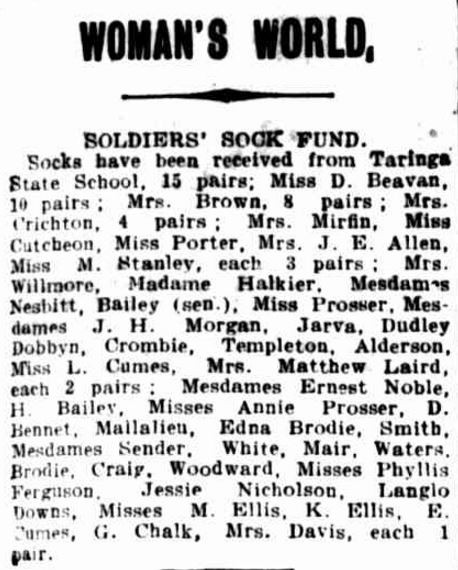
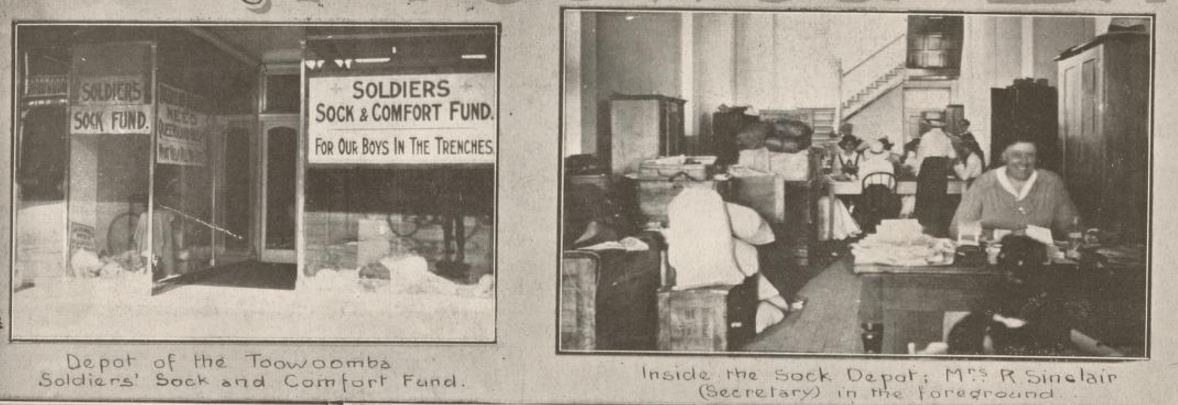
Queenslander Pictorial, supplement to The Queenslander, 1 January, 1916. John Oxley Library, State Library of Queensland. Image 702692-19160101-0024
One prolific knitter for the Queensland Soldiers' Sock Fund was Rebecca Balser of Teneriffe. The 83 year old was featured in The Queenslander and Brisbane Courier newspapers in March 1916 for the feat of knitting 100 pairs of socks as well as caps, scarfs and mittens for soldiers at the front.
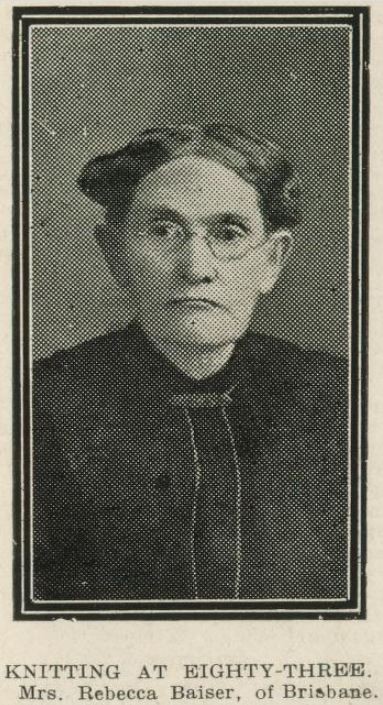
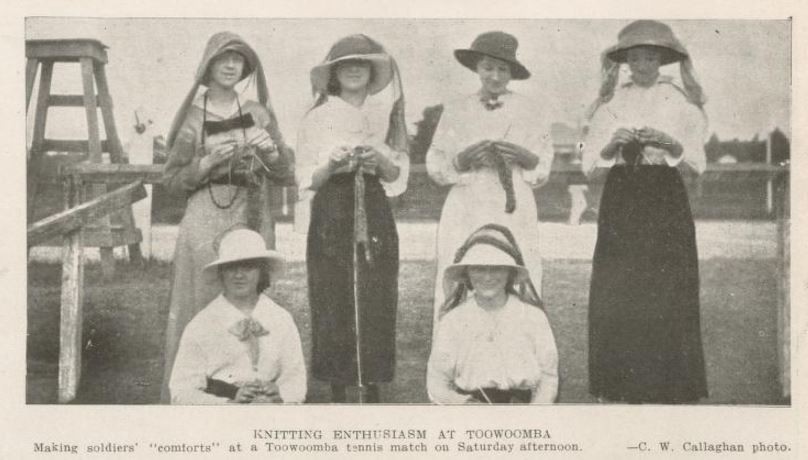
From Queenslander Pictorial, 16 October, 1915. John Oxley Library, State Library of Queensland. Image 702692-19151016-0025
At the first annual meeting on May 9, 1916 it was reported that 19,181 pairs of socks were transported to the front. In 1917, after a special appeal was made, 45,025 pairs of sock were made in that year. The fund continued to operated at the Albert Street depot until its activities ceased in February 1919, at which time volunteers were requested to turn their attention to making influenza masks to guard against the influenza pandemic known the Spanish Flu. Overall it was estimated that the Queensland Soldiers' Sock Fund created 104,594 pairs of socks between 1915 and 1919. Charitable subscriptions and fundraisers for the fund during this period resulted in £4694/17/10 being collected - over $353,000 today.
Further reading
- Queensland Soldiers' Comforts Fund. (1919). Report of the work done by the Queensland Soldiers' Comforts Fund, 1915-1919.
- MacLeod, R. (1917). For the sake of the soldier : Voluntary work of Brisbane women / by Rita MacLeod. Brisbane: Gordon and Gotch (Queensland).
Comments
Your email address will not be published.
We welcome relevant, respectful comments.